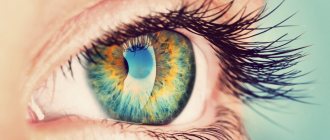How to recognize discrete?
Discrete people are those people who must study all the information received from the outside world and sort it into shelves in a strict order, translate it into diagrams and logical chains.
In everyday life, discretes are very calm and reasonable people, they are pedantic, scrupulous, they do not like displays of feelings and try to communicate strictly to the point; such people are often classified as smart people.
How to understand that the interlocutor is discrete?
A distinctive feature of discretes is that they experience the world not through the senses, but through logic. Discrete resembles a walking computer: it constantly weighs the pros and cons, thinks not about the people themselves, but about the causes and consequences of their behavior.
Discrete individuals have striking distinctive features that make people of this type easy to recognize:
- Dry speech with an abundance of logical connections and conclusions. Discrete likes not to talk about events, but to analyze them. At the same time, he is silent about his feelings and does not even betray them with intonation. But he pays special attention to the facts.
- When choosing any item, he first of all thinks about its functionality and benefits. Discrete will not waste money on a useless thing.
- During a conversation, he prefers not to look his interlocutor in the eyes. However, some discrete people know how to maintain eye contact, but they do this only because it is customary.
- Discrete people do not know how to show insight in communication, so they often seem tactless. But that's not true. It’s just that it’s hard to understand another person using logic, and they’ve learned to ignore their feelings.
- Discretion is almost never the soul of the company. On the contrary, people of this type are often closed and unsociable.
There is an opinion that people are not born with disabilities, they become them under the influence of life conditions, and that there are no children who are children with disabilities.
However, every person is born with already inherent capabilities, which, if the necessary conditions are met, will be developed in the right direction. There are two ways to become discrete:
- of one's own free will,
- as a result of unfavorable living conditions (read about this below).
How visual, auditory, kinesthetic and discrete learners learn languages
Scientists have long noticed that different people learn new information differently. Some need to be shown it, others need to be allowed to hear it, others need to be allowed to feel it, and others need to be reduced to some formulas or diagrams. Accordingly, four groups of psychotypes were identified: visual, auditory, kinesthetic and discrete.
Currently, there are many tests on the Internet to determine your psychotype, so we will not dwell on how it is determined. Google it and you will find out everything. We are interested, first of all, in how you can use knowledge of your psychotype in learning a foreign language.
Visual
The name of this type of student comes from the word “visual”, i.e. “visual”, “perceived by sight”. Visual learners prefer to see information rather than hear or feel it. If you are a visual learner, then to master a foreign language try:
a) focus on video lessons; On the Internet you can find a lot of useful training videos, which are a pleasure to watch! So, for example, you are learning English, in which you have to learn the difference between the present simple and the present continuous. Instead of reading vague explanations in a textbook, go to YouTube, search for the relevant query and get hundreds of video lessons on your topic. Look through two or three... a dozen lessons, and I’m sure you won’t need to read the textbook anymore.
b) use pictures (for example, illustrated dictionaries to remember words), large bright diagrams and tables.
c) use imagination, which will help “revive” language material. For example, grammatical rules will be better remembered if examples for them are presented in the form of events. For example, in English there is the so-called “Present Simple Tense”, which is used for regularly repeated actions. This time is ideal for describing simple everyday actions such as: “getting up early in the morning”, “having breakfast”, “getting ready for work”, “washing the dishes”, etc. So why not imagine a vivid picture of yourself, reluctantly getting up in the morning, half-asleeply finishing your breakfast and getting ready for work with doom.
d) watch (cartoon) films in a foreign language. If your level of preparedness is still low, then you can use subtitles.
Audial
The name of this type of student comes from the word “auditory”, i.e. “auditory”, “perceived through hearing”. Auditory learners prefer to listen rather than watch or feel. If you are an auditory student, then:
b) learn foreign languages using audio courses. Personally, I have great respect for audio courses built using the Pimsleur method. This is a fairly well-thought-out method of learning language through auditory perception. One drawback is that most courses are in English. Although, the level of English is not difficult, and if you studied conscientiously at school, then you can easily use these courses.
a) use audio books to their full potential. On the Internet you can find a huge number of narrated books of different levels; you just need to be patient and choose from them those that you like.
Kinesthetic
A kinesthetic person prefers to perceive information through sensations. To know an object, he needs to touch, smell, lick... in general, do something to get sensations. If you are a kinesthetic learner, then:
a) listen to your feelings while learning a foreign language. In fact, not only statements, but even individual words can evoke distinct sensations. Even just reading or hearing the combination “sour lemon” gives a feeling in the mouth as if we had just put a slice of this product there.
b) try to learn languages in a comfortable environment: you should not be disturbed by foreign odors, an uncomfortable chair, a sticky table, etc. Avoid anything that might make you feel negative while learning a language.
Discrete
Discrete is essentially a logician. He builds logical chains, sees the relationship of one phenomenon with another, notices differences and similarities... According to scientists, until recently there were not many discretes, but recently the number of people of this psychotype has increased. No one can name the exact reasons, although it is assumed that this was somehow influenced by the development of modern information technologies. If you are a discrete student, then the main recommendation would be to use tables and diagrams, especially when studying grammar. In my opinion, discretes are ideal students, since any knowledge is logical. Discrete people manage to grasp this logic and effectively assimilate knowledge.
So, identify your dominant channel of information perception and use it to its full potential!
Alexey Ermakov
How does a person become discrete?
Many children from disadvantaged families, when exposed to unfavorable factors, are forced to become discrete children, and a kind of protective mechanism is triggered.
A child who is not pampered with positive emotions and feelings withdraws into himself and finds peace in the logic of things, which is always present in everything. Subsequently, in adult life, the discrepancies do not change, because, having had a negative experience on an emotional level, they no longer trust people, but believe only in reason and the logical course of things.
Another category of people who become discrete of their own free will are outstanding people, that is, scientists, politicians, businessmen. Such discrete people gradually, over the course of their lives and gain experience, come to the conclusion that it is more convenient for them to live, perceiving everything around them through the prism of logic; these are the so-called smart guys.
Discretion in the profession
Discrete people not only have a wealth of life experience in various spheres, but are also very educated, which inevitably leads to the perception of life through the construction of analytical conclusions on each issue.
Many of them become discrete due to circumstances or their chosen profession. The best professions for discrete workers:
- Most programmers are discrete because they work with software and not with real people, which leads to a change in thinking.
- Many scientists are also discrete, because scientific research comes first for them, which leads to less expression of emotions and more manifestation of logic.
- Discrete people are the best psychologists due to their rich life experience and analytical mind.
How to communicate with a discrete person?
Discrete values honesty most of all in people, so the worst thing you can do is try to deceive such a person. If discreet finds out about this, it will not be easy to justify oneself in his eyes. Also, you should not try to impress a discreet person with a provocative appearance. Most likely, this will confuse him or he will decide that the interlocutor is going to manipulate him.
There is no need to be offended by a discrete person if he does not make eye contact during a conversation. This doesn't mean he's lying or isn't interested in talking. It's just more convenient for him. This is especially difficult for visual learners to understand. However, it is also difficult for kinesthetics to get along with discrete people, since these people do not like touch and do not come close during a conversation. Discrete people appreciate it when other people respect their personal space. This must be taken into account if you want to make a good impression.
KGBPEU "Rubtsovsk Pedagogical College"
Education for a teenager is mainly a process of perception and assimilation of the proposed information.
Depending on the characteristics of perception and processing of information, people can be divided into four categories:
· Visual learners are people who perceive most information through vision.
· Auditory learners are those who primarily receive information through the auditory canal.
· Kinesthetics – people who perceive most of the information through other senses (smell, touch, etc.) and through movements.
· Discrete - their perception of information occurs mainly through logical comprehension, with the help of numbers, signs, and logical arguments. This category is perhaps the smallest among people in general.
Why is it important to know how a student perceives information? During the lesson, the teacher can present information to students using all channels of perception: vision, hearing, and the kinesthetic channel, then each of them has a chance to learn at least part of these messages. This is usually what happens. This chance increases significantly if, for example, both the teacher and the student are visual (or auditory) learners. Unfortunately, there are few kinesthetics among teachers.
If the teacher knows which category their student belongs to, it is easier for them to build a relationship with him. Much becomes clear: why problems with discipline arise, how to properly encourage a teenager or reprimand him, etc.
Now briefly about how we can recognize a person’s leading channel for perceiving and processing information.
What you need to pay attention to:
Dictionary of communication.
A visual person in his speech uses nouns, verbs, adjectives, mainly related to vision (look, observe, picture, at first glance, as you see, etc.).
The auditory language is characterized by the use of words related to auditory perception (voice, listen, discuss, silent, silence, loud, euphonious, etc.).
Kinesthetic vocabulary mainly includes words that describe feelings or movements (grasp, soft, warm, touch, flexible, good smell, etc.).
Direction of view.
When communicating, visual learners look primarily upward, auditory learners look along the midline, and kinesthetic learners look downward.
Features of attention.
It is generally difficult for a kinesthetic learner to concentrate his attention, and he can be distracted by anything; an auditory learner is easily distracted by sounds, while a visual learner is hardly bothered by noise.
Features of memorization.
The visual person remembers what he saw, remembers with pictures. Auditory - what was discussed is remembered by listening. A kinesthetic learner remembers the general impression. Remembers by moving.
And how many opportunities does a teacher have to observe different types of students in their daily activities? For example, see who writes down their homework. Let's say it's written on the board.
Visual: he will obediently open his notebook and write down, or rather, copy from the board, what is assigned for homework. He prefers to have the information he needs than to ask others for it. He will easily perceive it written on the board.
Auditory: if he wants to write down his homework, he will most likely ask his neighbor what was assigned. From hearing, he will write down this information in his notebook or at home he can start calling his classmates in order to find out what is assigned.
Kinesthetic: most often he rummages in his bag for a long time, takes out textbooks from there, finds the necessary pages and circles the numbers of the necessary exercises right in the textbooks. Observing behavior during recess will give a lot:
Visual: most often stays in class if most students leave it. For him, the main thing is the opportunity to calmly plunge into his visual images. But he may be disturbed by noisy dialogues of auditory learners or active games of kinesthetic learners. Then he will prefer to go out into the corridor, where he will observe others or look at information on the walls.
Auditory: uses recess to talk and make noise. Especially if in the previous lesson you had to “keep your mouth shut.” For a kinesthetic learner , a change is needed to warm up and move around.
What do these observations indicate? That every teenager instinctively chooses the method of recuperation that suits them. You also need to approach each of them individually in academic work.
Experts say:
· A visual person can be required to quickly solve problems;
· From the auditory – immediate repetition of the material he heard;
· It is better not to expect either one or the other from a kinesthetic learner - he needs a different attitude, he needs more time and patience on the part of the teacher.
When doing work in class or at home, it is recommended that the visual student be allowed to have a sheet of paper on hand, on which he can draw, shade, draw, etc., in the process of comprehending and memorizing the material. The auditory learner should not make comments when he makes sounds or moves his lips during the process of memorization - this makes it easier for him to cope with the task. Don’t force a kinesthetic learner to sit still for a long time, be sure to give him the opportunity to relax his motor (go for chalk, a magazine, write on the blackboard, etc.), he remembers the material better in movement.
Of course, it is very important to communicate with the child in “his language”:
with the visual, using words describing color, size, shape, location, using diagrams, tables, visual aids, etc.
With audio, using voice variations (volume, pauses, pitch), reflecting the rhythm of speech with the body (especially with the head) at a speed characteristic of this type of perception.
With kinesthetics using gestures and touches. The more exaggeration, the better for memorization. Yes, and remarks on a teenager will have the desired effect if they are made “in his language”:
· It is better for the visual to shake his head and wag his finger;
· For auditory – say in a whisper “sh-sh-sh”;
· Kinesthetics – put your hand on your shoulder, pat it.
Of course, any person in his life, including a teenager, uses a variety of channels of perception. He may be visual by nature, and this does not mean that his other senses practically do not work. They can and should be developed. The more channels are open for the perception of information, the more effective the learning process is.





